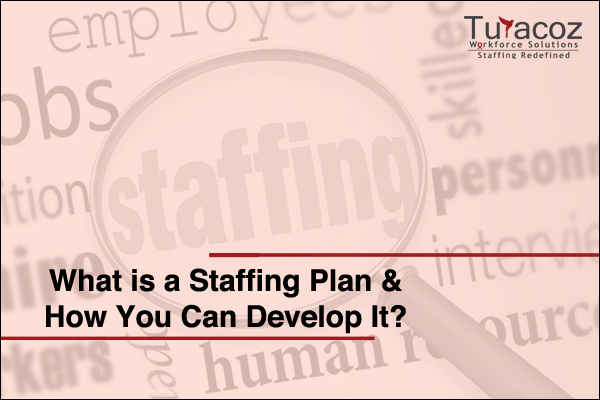Your people are your company’s biggest asset, and can give your business a competitive edge, helping the organization grow its bottom line. However, looking after those people requirements, a focused approach must also be people-centric. A dedicated staffing strategy is a pre-requisite for any business wanting to understand its people.
Your organization may never have all the money or time it needs to fully realize its mission, but that does not stop you from trying. Likewise, the fact that you do not have all the resources that you need in hand should not stop you from having a staffing plan in place.
Whether you’re creating a new position, scaling up your workforce, or simply performing a re-hire, you must create a staffing plan first. Doing so helps to ensure that all bases are covered within HR, but it must also guarantee that the necessary departments are on the same page so that they can ultimately collaborate to bring on the candidates that fit the organization best. Once a broad plan is put into place, your company will be able to use it as a foundation for all of its staffing requirements and data in future.
What is a staffing plan?A staffing plan is a ‘map’ that outlines the staffing requirements of your organization. It does not necessarily represent what your organization looks like right now, but what it could look like if all the critical functions were being attended to. These plans are meant to be tailor-made for each specific organization, devised by HR in collaboration with other relevant departments. However, the details may shift from plan to plan.
But the question is: what skills do you need to get the job done and the exact number of roles and positions required to accomplish the same?
Developing a staffing planOne important question that must be considered before developing a staffing plan is: what is a staffing plan going to consist of in terms of hiring strategy?
A staffing management plan should consider all types of hires within an organization. That’s because the organization will choose whatever hiring method makes the most sense for a specific situation. Most of the time, a direct hire is the answer. However, it’s not the answer All of the time. If that was the case, then nobody would get hired on contract.
Developing your staffing plan is not an exact science and there is no ‘right’ or ‘wrong’ way to approach it. Like most planning, it is never fully finalized, and you should revisit your staffing plan on a regular basis. Circumstances will change over time and those changes may impact your staffing needs.
Below are the steps involved in developing a staffing management plan:
- Forecast the Future: You want to look at where you currently are and where you want your station to be 5 years from now. Identify the services you want to provide now or in future.
- Determine Your Staffing Needs: Determine what type of skilled resources are needed to implement the requirements you have identified and what skill level is appropriate (beginner, intermediate, or advanced).
- Develop Comprehensive Job Descriptions and Lists of Requirements: Develop a detailed and useful set of job requirement after discussing with the manager. This information can help you determine whether qualified candidates already exist or whether they can be developed within the company before recruiting externally.
- Analyze Your Current Workers: List everyone currently working as your staff and identify their role, career graph and skill level.
- Analyze Your Turnover and Business Trends
All this information can be collected by the HR Department and eventually help forecast the company’s staffing and recruitment needs.
A fact that we all know is, though all businesses are different most are connected by one very common thread – the need for more skilled workers during peaks. Let Turacoz help you cater your staffing needs during peak hours.
October 29, 2018 By Smita Soni


Leave a Comment